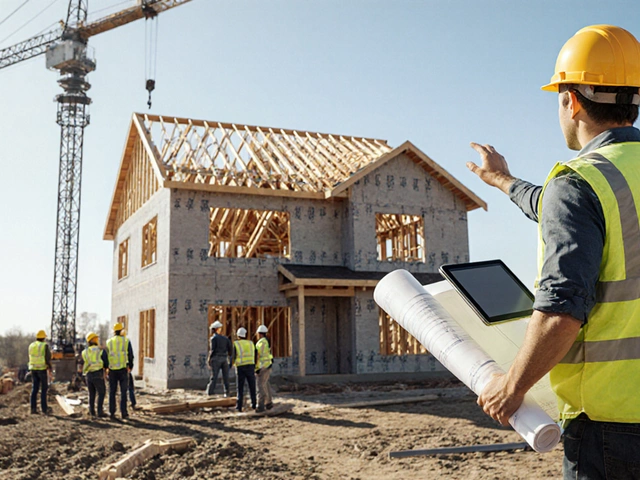Commercial Building Basics: Materials, Types, and Safety Codes
If you’re planning a office block, a shop center, or any non‑residential structure, you need a clear picture of what makes a commercial building work. It isn’t just about big walls and roofs – the right materials, the right construction method, and the right safety rules keep the project on budget and out of trouble.
Choosing the Right Materials
Start with what you’ll actually build with. For most commercial projects, steel, concrete, and brick are the go‑to choices. Steel frames give you speed and flexibility. You can raise the frame quickly and change the layout later without tearing down walls.
Concrete is the heavyweight champion for floors and foundations. It holds up under heavy loads, resists fire, and works well with the limestone and other aggregates you can source locally. Using limestone from local quarries, like those at Lime Hillock, can cut transport costs and give you a material that’s been proven for decades.
Brick and block are still popular for exterior walls because they look good, need little maintenance, and provide decent fire resistance. When you combine brick with a solid concrete core, you get a building that feels sturdy and ages well.
Don’t forget the smaller stuff – insulation, waterproofing, and flooring. Good insulation keeps heating bills low and meets energy code requirements. A quality waterproof membrane protects the base of the building from damp, especially important in areas with heavy rain.
Understanding Building Types and Safety Codes
Commercial buildings fall into a few main categories: steel‑frame, reinforced concrete, and masonry. Each type has its own strengths. Steel‑frame buildings are fast to erect and adapt well to large open spaces. Reinforced concrete is best for heavy‑load areas, like warehouses or multi‑storey offices. Masonry works well for low‑rise shops and small offices where appearance matters.
Safety codes are not optional – they’re the law. The most common rules involve fire ratings, load capacities, and accessibility. Fire‑rating requirements dictate the materials you can use for walls, doors, and ceilings. For example, a wall with a 2‑hour fire rating needs specific gypsum or concrete panels.
Load capacity checks make sure the floor can handle the weight of people, equipment, and inventory. An engineer will calculate the live load (people and furniture) and the dead load (the building’s own weight) and match those numbers to your material choices.
Accessibility standards, like those in the Equality Act, require ramps, wide doors, and usable toilets. Planning these features from the start saves costly retrofits later.
When you work with a local supplier, you often get advice that fits the regional codes. Lime Hillock Construction Material Resources, for instance, can tell you which limestone grades meet local fire and strength standards, cutting the guesswork out of your spec sheet.
In practice, start by sketching a simple layout, pick a primary material (steel, concrete, or brick), then check the fire rating and load tables for that material. From there, add insulation, waterproofing, and finish details. Keep a checklist of safety codes and verify each item as you move forward.
By focusing on material choice, building type, and code compliance early, you’ll avoid surprises, stay within budget, and finish a commercial building that stands the test of time.
What Makes a Building Commercial? Key Signs and Simple Insights

Ever wondered what actually makes a building 'commercial'? This article breaks down the main differences between commercial and other types of buildings, using straightforward terms. Discover how zoning, design, regulations, and real-life examples come into play. Get practical tips if you’re looking to buy, lease, or build a commercial property. Walk away with fresh perspectives on a topic that affects nearly every business owner out there.
read moreComprehensive Guide to Commercial Building Construction

A commercial building is designed for business operations such as offices, retail stores, warehouses, and restaurants. This article explores the intricacies of commercial construction, highlighting factors like design, regulations, and project management. By understanding these elements, stakeholders can ensure their projects meet functional and aesthetic goals. Essential tips and industry insights are also discussed for informed decision-making in commercial construction projects.
read more



